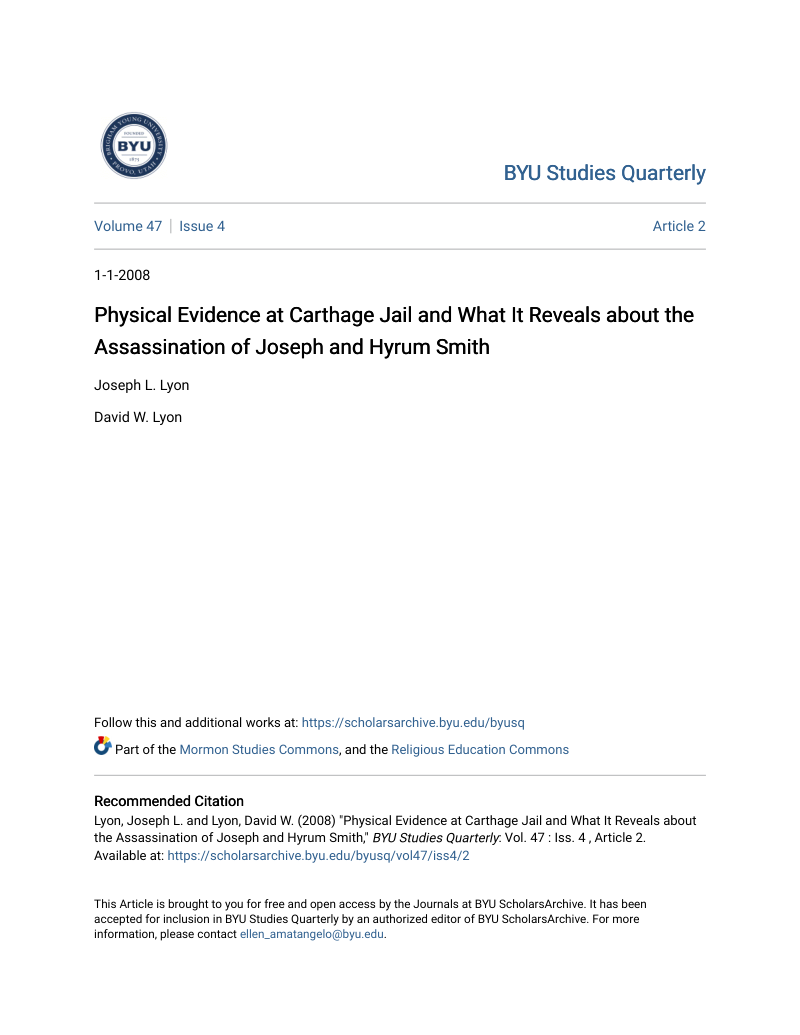Joseph & David Lyon summarize all that is currently known about the ballistic and forensic evidence concerning the killing of Joseph and Hyrum Smith.
- Type
- Academic / Technical Report
- Source
- Joseph L. Lyon LDS
- Hearsay
- DirectSecondary
- Reference
Joseph L. Lyon and David W. Lyon, “Physical Evidence at Carthage Jail and What It Reveals about the Assassination of Joseph and Hyrum Smith,” BYU Studies 47, no. 4 (2008), accessed December 15, 2022
- Scribe/Publisher
- BYU Studies
- People
- David W. Lyon, Joseph L. Lyon
- Audience
- Reading Public
- Transcription
Abstract: In 1844, Joseph Smith, founder of The Church of Jesus Christ of Latter-day Saints, was assassinated in Carthage, Illinois, along with his brother, Hyrum. Much has been written about the assassination of Joseph and Hyrum Smith, but little attention has been paid to the crime scene in Carthage Jail. This article examines eyewitness accounts of the assault, the layout of the crime scene, the physical evidence left in the jail, and the types of weapons used and the wounds they inflicted on the Smith brothers, John Taylor, and Willard Richards. This multidisciplinary investigation of the martyrdom examines the accuracy of the firsthand accounts of the Willard Richards and John Taylor and evaluates the crime scene. Moreover, the surviving physical evidence is consistent with an assault by men armed with 69-caliber muskets, the standard musket issued to militia units in Illinois. The military muskets were used is supported by Willard Richards's mention of bayonets, by the diameter of the bullet holes in the door, by the diameter of the bullet holes in Hyrum Smith's clothing and face and by the dent in his watch.
- Citations in Mormonr Qnas
The B. H. Roberts Foundation is not owned by, operated by, or affiliated with the Church of Jesus Christ of Latter-day Saints.

